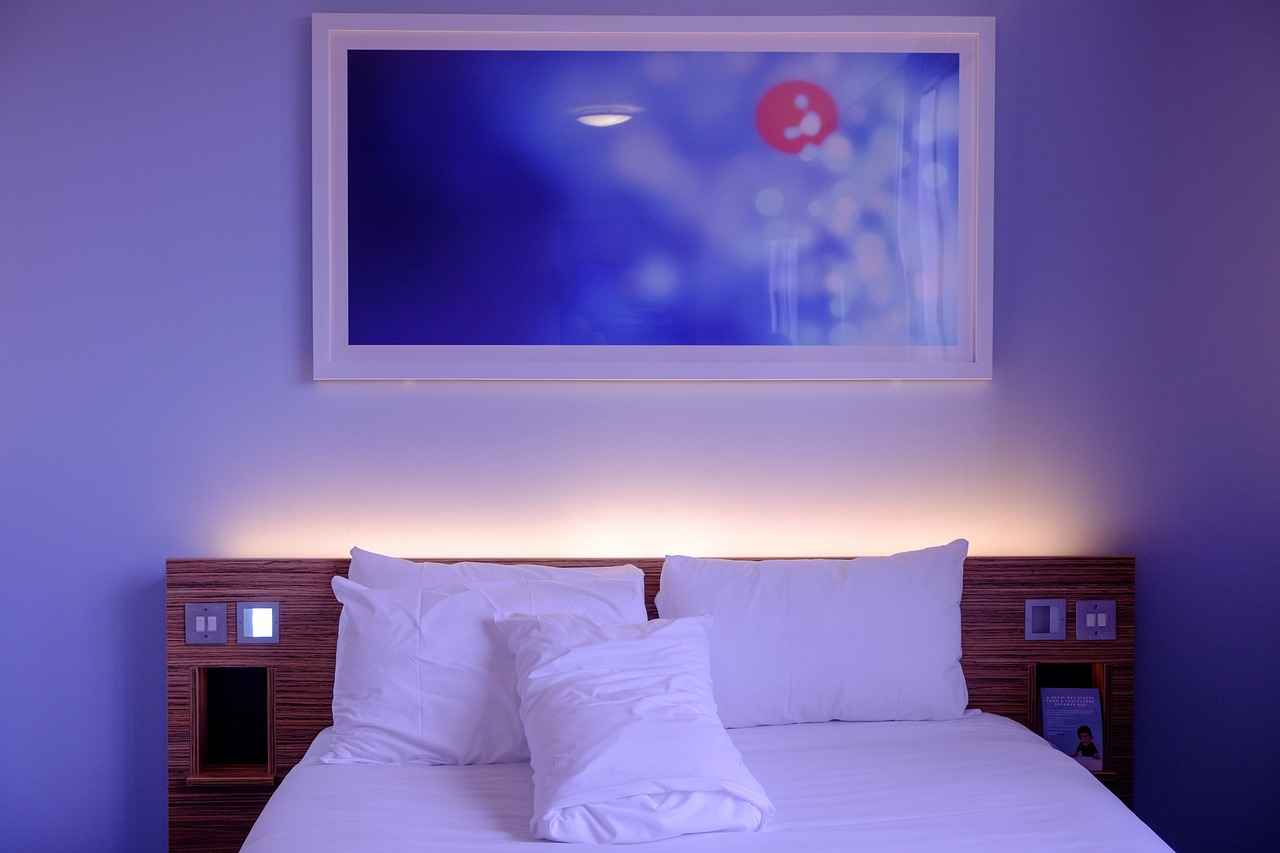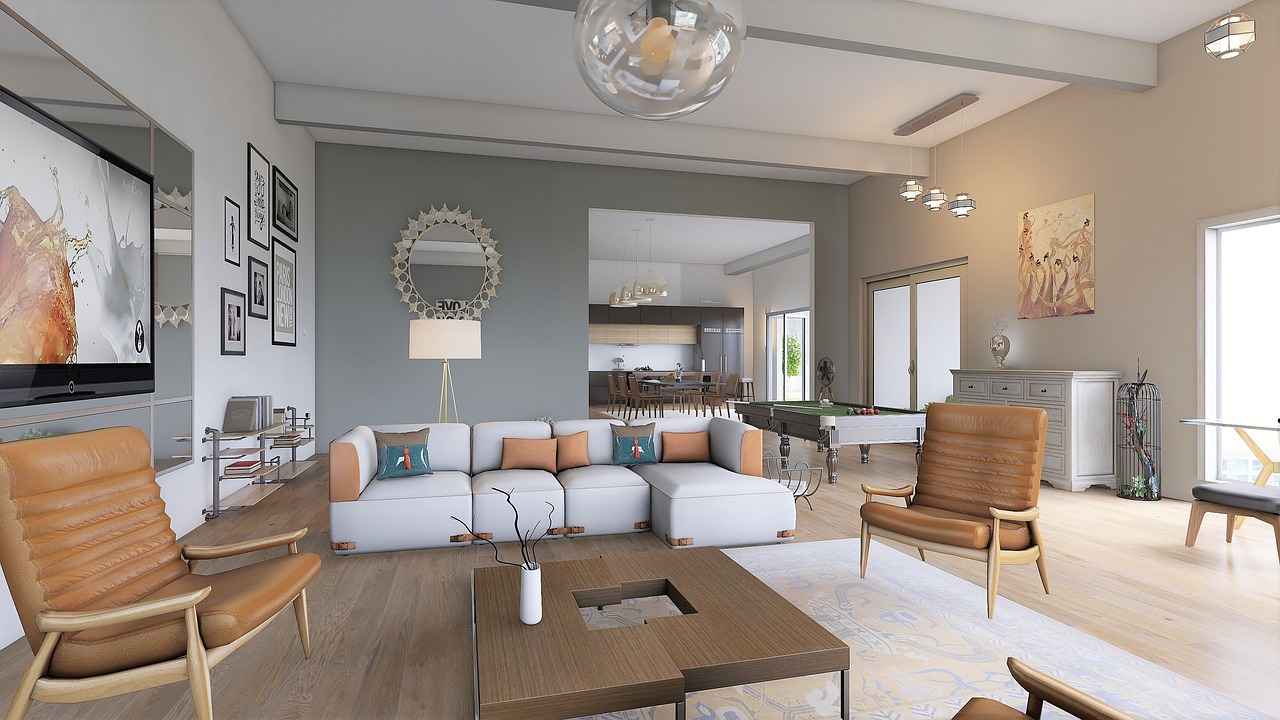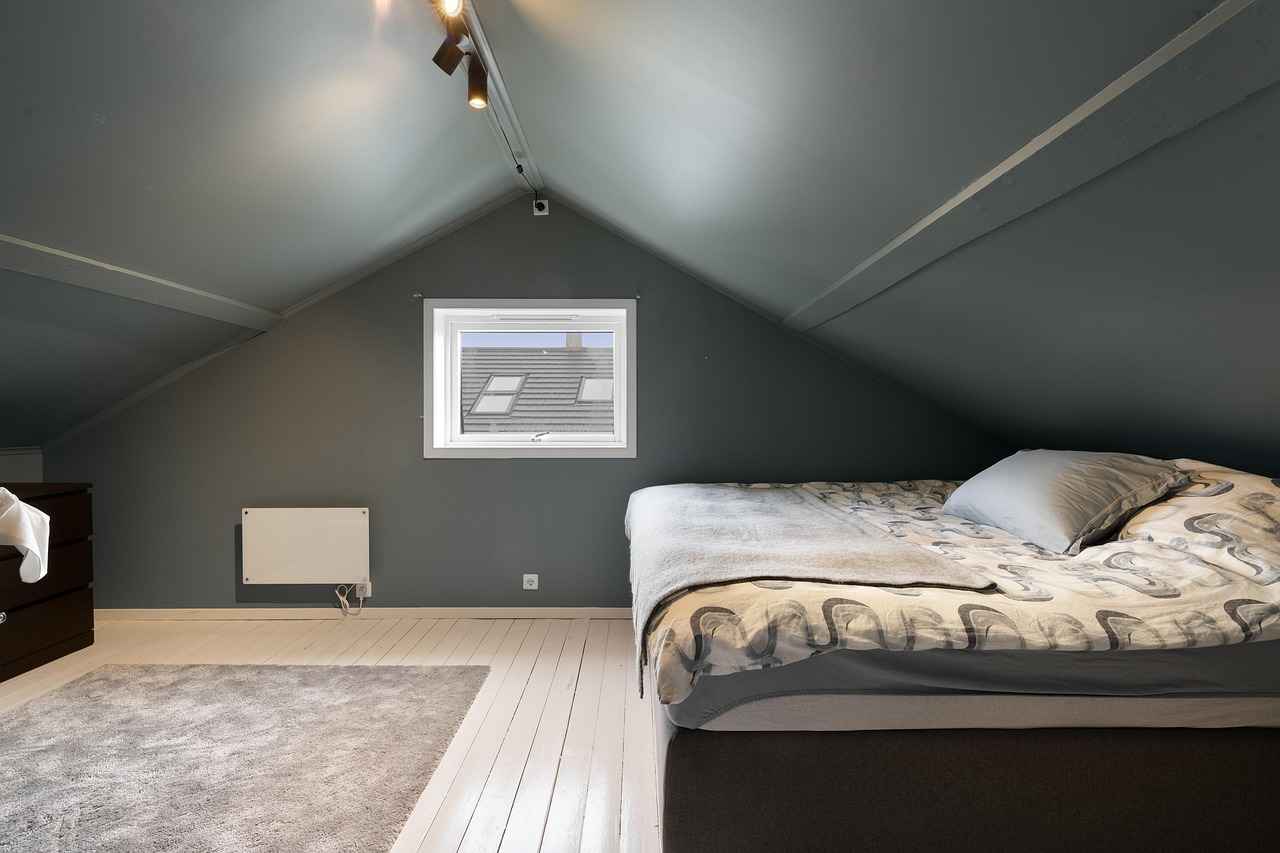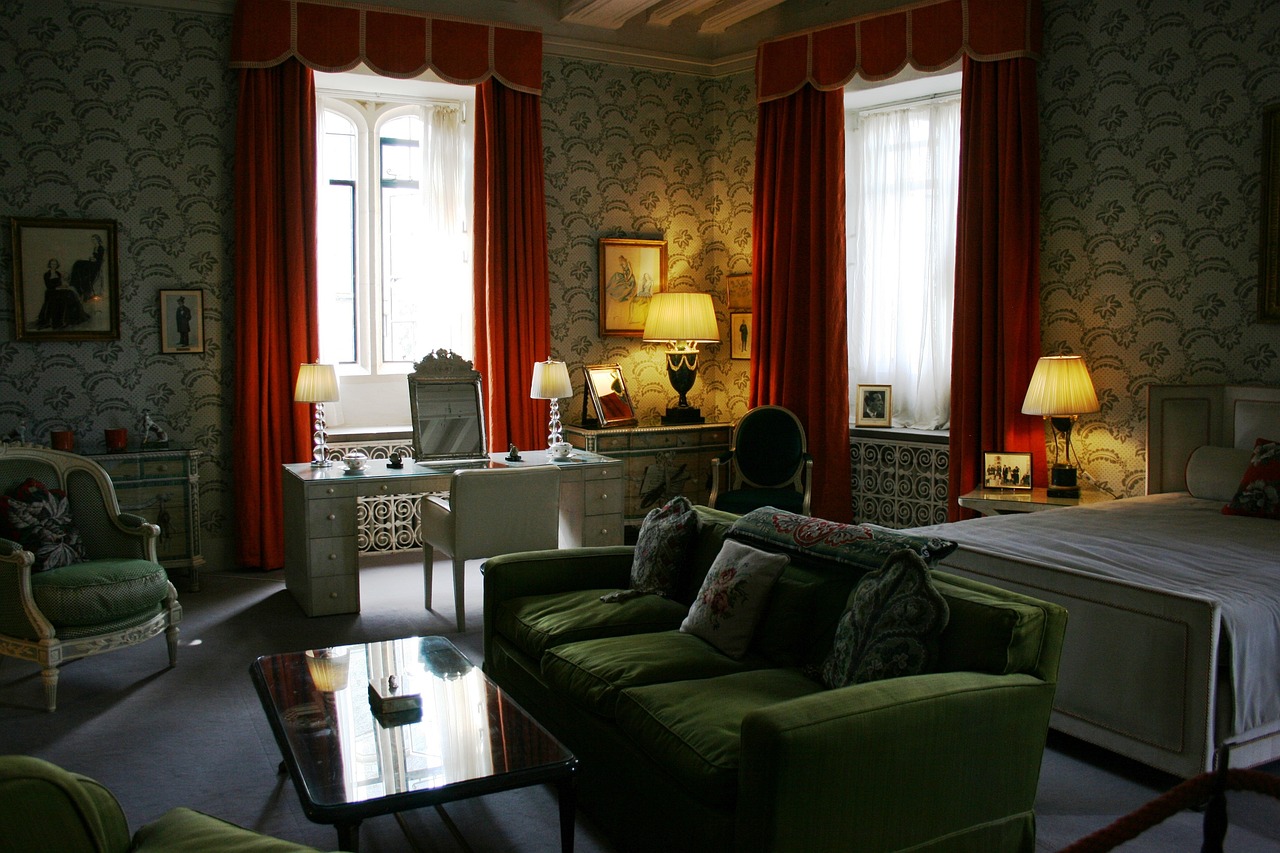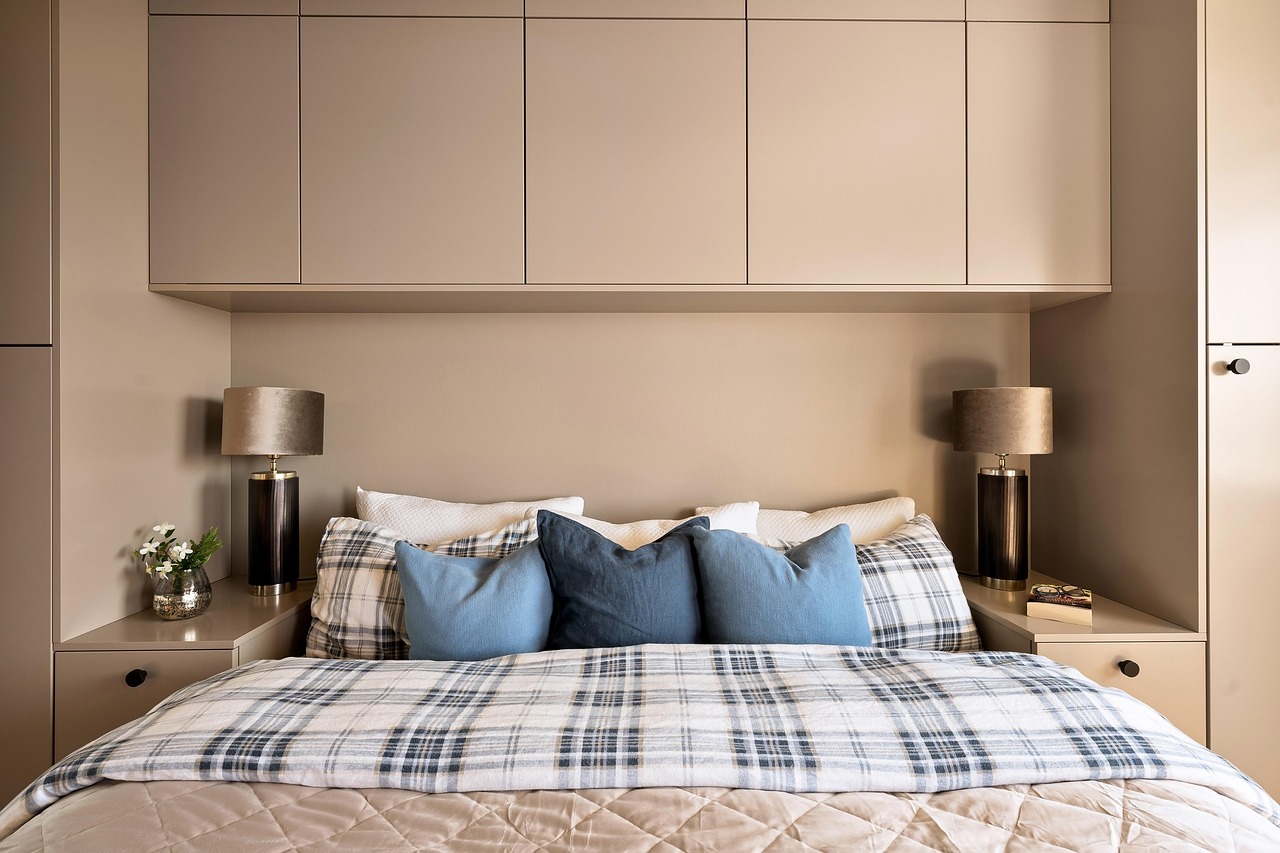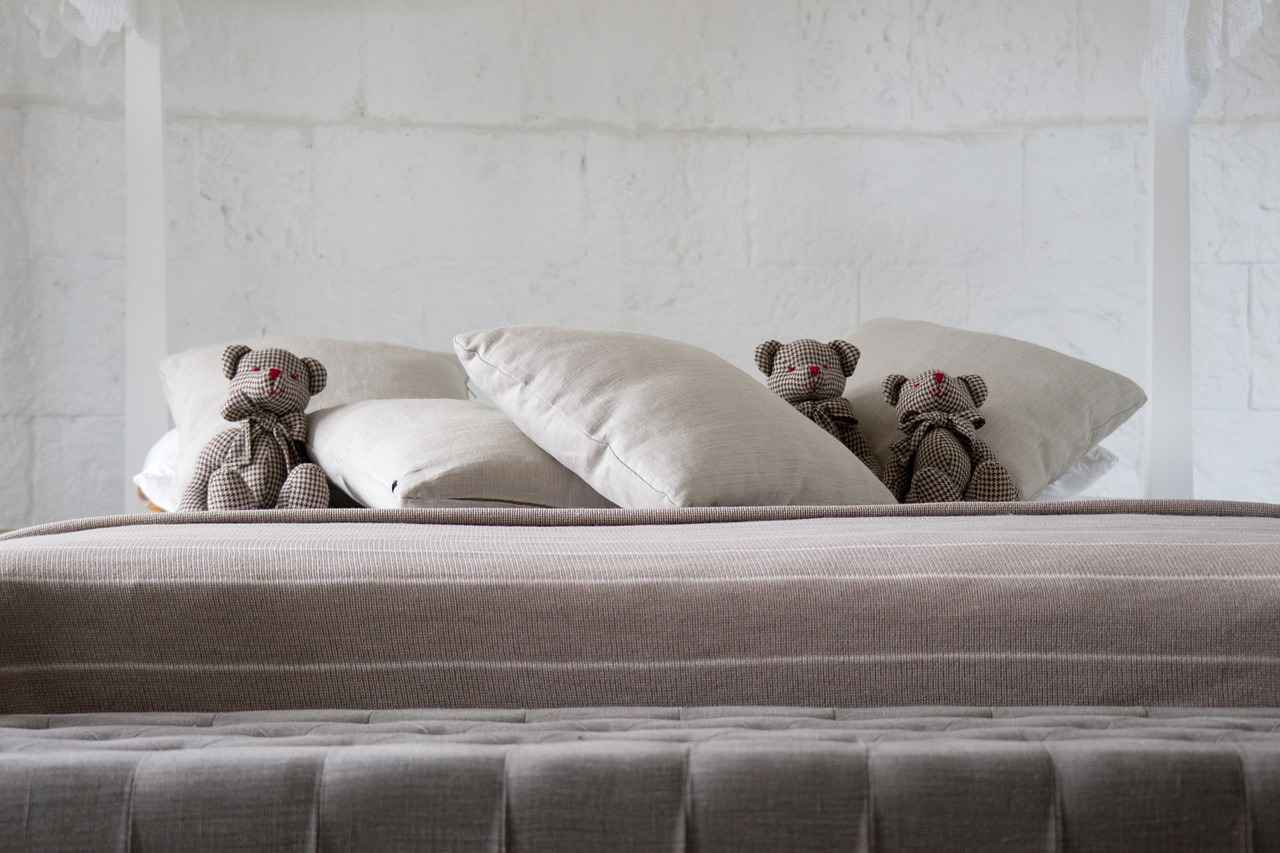This article delves into the aesthetic and functional benefits of low floor bed designs, which are perfect for minimalist homes. These beds not only enhance the visual appeal of a bedroom but also provide practical advantages that cater to modern living. Discover various styles, materials, and tips to create a serene bedroom environment that embodies simplicity and tranquility.
What is a Low Floor Bed?
Low floor beds are crafted to sit close to the ground, presenting a sleek and contemporary look. Their minimalist profile enhances the perception of space, making them a suitable choice for diverse interior styles. These beds are particularly favored in modern homes, where simplicity and functionality are paramount.
Benefits of Low Floor Beds
- Enhanced Accessibility: Low floor beds are designed for easy access, making them an excellent option for individuals with mobility challenges, including children and the elderly.
- Space-Saving Design: By eliminating bulky frames, these beds create an open and airy environment, making small bedrooms feel more spacious.
- Unique Aesthetic Appeal: The grounded appearance of low floor beds fosters a cozy atmosphere, contributing to a peaceful sleeping environment.
Popular Materials for Low Floor Beds
When selecting a low floor bed, the choice of material plays a significant role in both aesthetics and durability. Here are some popular options:
- Wooden Low Floor Beds: Known for their warmth and natural beauty, wooden beds come in various finishes, such as oak and walnut, seamlessly blending with different décor styles.
- Metal Low Floor Beds: Offering a sleek, industrial look, metal frames are lightweight and durable, making them ideal for contemporary minimalist designs.
Design Styles for Low Floor Beds
Low floor beds can harmoniously fit into various design styles, each adding its unique character to the bedroom:
- Scandinavian Minimalism: Emphasizing simplicity and functionality, Scandinavian low floor beds often feature clean lines and light wood, creating a calm and inviting atmosphere.
- Japanese Zen Style: Focusing on minimalism and natural elements, Japanese low floor beds typically incorporate tatami mats and futons, promoting a serene, uncluttered environment.
How to Choose the Right Low Floor Bed
Selecting the perfect low floor bed requires careful consideration of size, material, and design. Here are some tips:
- Assessing Room Size: Measure your space to ensure a comfortable fit, allowing for movement and additional furniture while maintaining a minimalist aesthetic.
- Personal Style Considerations: Choose a bed that reflects your personal style, ensuring its design and material complement your existing décor for a cohesive look.
Tips for Styling a Low Floor Bed
Enhancing the visual appeal and functionality of a low floor bed involves thoughtful styling:
- Choosing the Right Bedding: Opt for simple, neutral bedding to maintain a clean look. Layering textures can add depth while preserving the minimalist aesthetic.
- Incorporating Minimalist Accessories: Utilize minimal accessories like small bedside tables, lamps, or plants to enhance the space without cluttering it, emphasizing the bed’s design and creating a serene environment.
In conclusion, low floor beds offer a stylish and functional solution for minimalist homes. By understanding their benefits, exploring various materials and styles, and implementing thoughtful design choices, you can create a tranquil bedroom space that reflects your personal style while embracing the essence of minimalism.
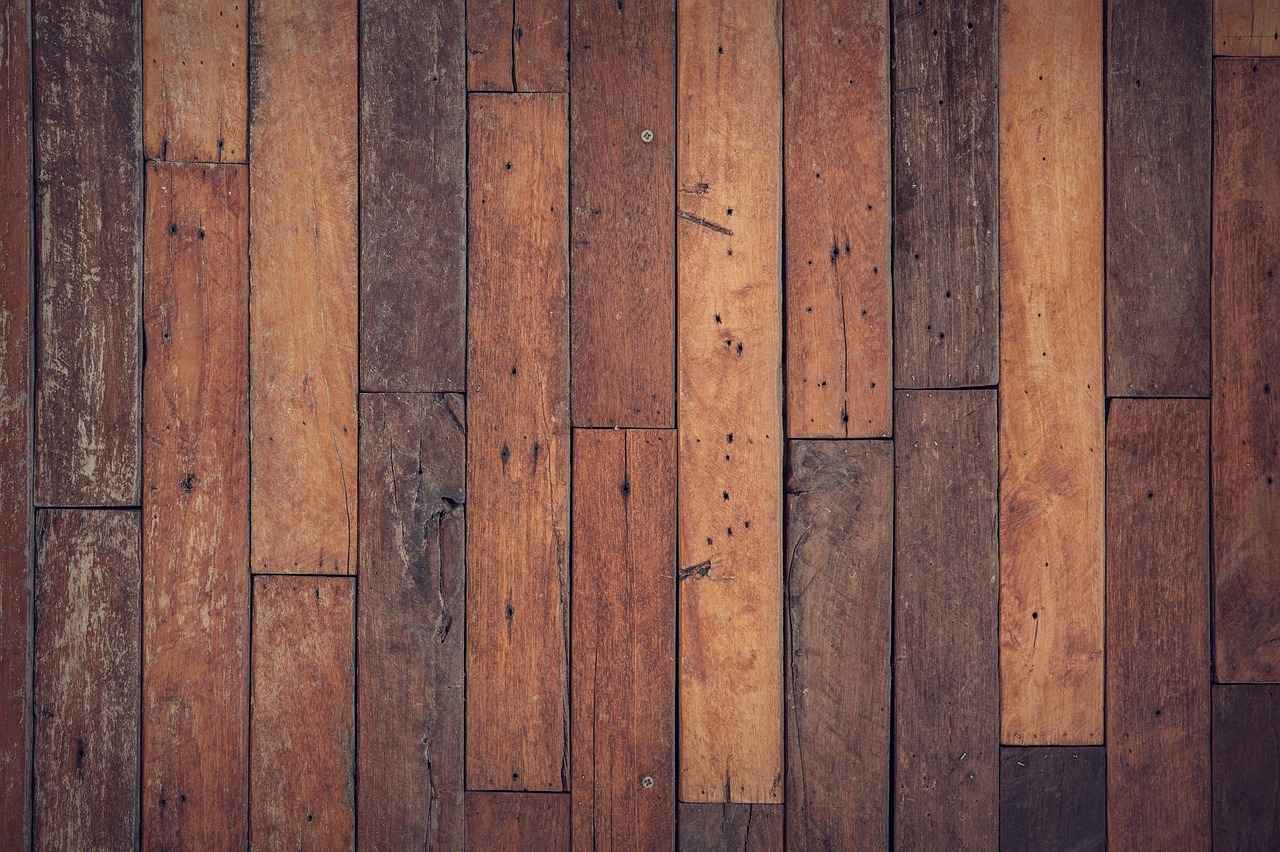
What is a Low Floor Bed?
Low floor beds are a contemporary innovation in bedroom design, characterized by their minimalist aesthetic and practical functionality. These beds are intentionally crafted to sit close to the ground, typically only a few inches above the floor. This design choice not only offers a sleek and modern appearance but also enhances the overall perception of space within a room. By eliminating the bulkiness associated with traditional bed frames, low floor beds create an open and airy environment, making them particularly appealing for those who appreciate minimalist living.
One of the most significant advantages of low floor beds is their ability to complement a variety of interior styles. Whether your home reflects a modern, Scandinavian, or even a Japanese aesthetic, low floor beds can seamlessly integrate into your design scheme. Their understated profile allows them to serve as a versatile foundation for various decorative elements, enabling homeowners to express their personal style without overwhelming the space.
In addition to their visual appeal, low floor beds offer practical benefits. They are especially suitable for individuals with mobility challenges, such as young children or elderly individuals, as the low height makes getting in and out of bed much easier. This accessibility feature promotes a sense of independence and comfort, allowing users to navigate their sleeping space with confidence.
Moreover, low floor beds are an excellent choice for small bedrooms. By reducing the visual weight of the bed, these designs can make a room feel larger and more spacious. The absence of bulky headboards and footboards contributes to a streamlined look, which is essential in compact living spaces. This design philosophy aligns perfectly with the principles of minimalism, where less is often more, and every element serves a purpose.
When selecting a low floor bed, it’s essential to consider the materials used in its construction. Options range from natural wood to sleek metal frames, each offering distinct advantages. Wooden low floor beds, for instance, exude warmth and character, making them a popular choice for those seeking a cozy atmosphere. On the other hand, metal frames provide a more industrial look, ideal for modern and contemporary interiors.
In summary, low floor beds are not just a trend but a practical solution for creating a stylish and functional bedroom environment. They embody the principles of minimalist design while offering accessibility and space-saving benefits. As you explore options for your bedroom, consider how a low floor bed can enhance your space, providing both aesthetic appeal and comfort.

Benefits of Low Floor Beds
Low floor beds have gained popularity in contemporary interior design, particularly in minimalist homes. Their design not only enhances the aesthetic appeal of a space but also offers a multitude of practical benefits. Below, we explore the key advantages of low floor beds in detail.
- Improved Accessibility: One of the most significant benefits of low floor beds is their accessibility. These beds are closer to the ground, making it easier for individuals with mobility challenges, such as the elderly or children, to get in and out of bed. This design promotes independence and reduces the risk of falls, creating a safer sleeping environment.
- Space-Saving Benefits: In smaller bedrooms, every inch counts. Low floor beds eliminate the need for bulky frames and high headboards, thereby maximizing floor space. This design choice creates an open and airy feel, making even the tiniest rooms appear larger. By keeping the bed low, you can also make room for additional furniture or decorative elements without feeling cramped.
- Unique Aesthetic Appeal: Low floor beds bring a modern and stylish touch to any bedroom. Their minimalist profile complements various interior design styles, from Scandinavian to Japanese aesthetics. The sleek lines and understated elegance of low floor beds can serve as a focal point in the room, enhancing the overall decor.
- Cozy and Grounded Atmosphere: The low height of these beds fosters a cozy, grounded atmosphere, making the bedroom feel more inviting. This design encourages a sense of tranquility, perfect for creating a serene space for relaxation and rest. The visual connection to the floor can also evoke feelings of stability and comfort.
- Versatile Design Options: Low floor beds come in a variety of materials, including wood, metal, and upholstered designs. This versatility allows homeowners to choose a bed that fits their personal style and complements their existing decor. Whether you prefer the warmth of wood or the sleekness of metal, there’s a low floor bed to suit every taste.
- Enhanced Design Flexibility: The minimalist nature of low floor beds allows for greater flexibility in bedroom design. You can easily experiment with different bedding, colors, and accessories without overwhelming the space. This adaptability is particularly beneficial for those who enjoy changing their decor frequently.
- Encouragement of Minimalism: Embracing a low floor bed can inspire a minimalist lifestyle. By choosing a bed that prioritizes simplicity and functionality, you may find yourself more inclined to declutter and simplify other aspects of your home. This shift can lead to a more peaceful and organized living environment.
In summary, low floor beds are not only a stylish addition to any bedroom but also provide numerous practical benefits. From improved accessibility and space-saving designs to their unique aesthetic appeal, these beds can transform your sleeping space into a serene and functional sanctuary. Whether you are looking to enhance your home’s design or create a more comfortable living environment, low floor beds offer an excellent solution that aligns with modern minimalist principles.
Enhanced Accessibility
Low floor beds are becoming increasingly popular, particularly for those who prioritize accessibility and comfort in their living spaces. One of the standout benefits of these beds is their ability to enhance accessibility for individuals with mobility challenges. This includes not only the elderly but also children and anyone recovering from surgery or dealing with physical limitations.
By sitting closer to the ground, low floor beds significantly reduce the effort required to get in and out of bed. For children, this means they can independently climb in and out without assistance, fostering a sense of autonomy and confidence. Similarly, for the elderly or those with mobility impairments, these beds can alleviate the risk of falls and injuries that may occur when navigating higher bed frames.
Moreover, the design of low floor beds often allows for easier transfers from wheelchairs or mobility aids. This is especially beneficial in home care settings, where caregivers can provide assistance without straining their backs or risking injury. The lower height means that caregivers can help individuals transition from sitting to lying down with greater ease and safety.
In addition to practical benefits, low floor beds can also contribute to a more inviting and comfortable bedroom atmosphere. The grounded nature of these beds can create a cozy, intimate space that encourages relaxation. This is particularly important for those who may experience anxiety or discomfort in more elevated sleeping arrangements.
Another advantage of low floor beds is their versatility in design. They can seamlessly fit into various bedroom aesthetics, from modern minimalist to traditional styles. The use of natural materials such as wood or upholstered designs can further enhance the room’s overall appeal while maintaining a focus on accessibility.
When considering a low floor bed, it’s essential to evaluate the specific needs of the user. For instance, individuals with limited mobility may benefit from beds that come with additional features, such as built-in storage or adjustable bases. These features can enhance both functionality and accessibility, making the bedroom a more user-friendly environment.
In conclusion, low floor beds represent a thoughtful solution for enhancing accessibility in the bedroom. By catering to the needs of children, the elderly, and individuals with mobility challenges, these beds promote independence and comfort. As more people recognize the benefits of low floor bed designs, they are likely to become a staple in homes that prioritize both style and functionality.
Space-Saving Design
When it comes to modern living, especially in urban settings, maximizing space is essential. Low floor beds are an innovative solution that not only enhances the aesthetic appeal of a bedroom but also significantly contributes to a more spacious feel. By eliminating the need for bulky frames and elevated structures, low floor beds create an open, airy environment that is perfect for minimalist living.
Low floor beds are designed to sit close to the ground, which has several practical benefits for small bedrooms. Their streamlined appearance helps to visually expand the room, making it feel less cramped. Here are some key aspects of how low floor beds achieve this:
- Reduced Visual Clutter: Traditional bed frames often dominate a room’s visual space, creating a sense of heaviness. Low floor beds, on the other hand, have a minimalist profile that allows for more open sightlines, which can make a room feel larger.
- Enhanced Light Flow: By keeping the bed closer to the ground, light can flow more freely throughout the space. This natural light effect can enhance the overall ambiance, making the room feel brighter and more inviting.
- Flexible Layout Options: Low floor beds can be positioned in various orientations without overwhelming the room. This flexibility allows homeowners to experiment with different layouts, optimizing the available space.
- Multi-Functional Use: Many low floor beds come with integrated storage solutions, such as drawers or under-bed compartments. This feature is particularly beneficial in small bedrooms where every inch counts, allowing for efficient organization without sacrificing style.
Moreover, low floor beds can be easily paired with minimalist furniture such as small side tables or wall-mounted shelves, further enhancing the spacious feel of the room. This design philosophy aligns with the principles of minimalist living, where every piece of furniture serves a purpose and contributes to the overall aesthetic.
Incorporating a low floor bed into your bedroom design can significantly alter the atmosphere. The bed’s low profile encourages a sense of grounding and tranquility, making the space feel more serene. To enhance this open atmosphere, consider the following:
- Neutral Color Palettes: Using light colors for walls and bedding can amplify the effect of space. Soft whites, light grays, and pastel hues reflect light, creating an airy feel.
- Minimal Accessories: Keep decor simple and uncluttered. Choose a few statement pieces rather than overcrowding the space with knick-knacks.
- Strategic Lighting: Utilize a combination of natural light and soft, ambient lighting to create a warm and inviting environment. Floor lamps or wall sconces can provide light without taking up valuable surface space.
Low floor beds also promote a sense of calm and relaxation, which is essential in a bedroom environment. Their close-to-the-ground design can evoke feelings of safety and comfort, making it easier to unwind after a long day.
In conclusion, low floor beds are an excellent choice for anyone looking to maximize space in a small bedroom. Their sleek design, combined with practical benefits like enhanced accessibility and storage options, makes them a versatile addition to modern homes. By embracing a minimalist aesthetic, homeowners can create a serene and spacious environment that feels both inviting and functional.

Popular Materials for Low Floor Beds
When it comes to selecting the perfect low floor bed, material selection plays a vital role in determining both the bed’s aesthetic appeal and its durability. The choice of material can significantly influence the overall vibe of your bedroom, making it essential to consider the various options available. Below, we delve into the popular materials used for low floor beds, highlighting their unique characteristics and benefits.
Wooden low floor beds are a classic choice that brings warmth and a natural touch to any bedroom. They are available in a variety of wood types, including:
- Oak: Known for its strength and durability, oak offers a timeless look that complements both traditional and modern designs.
- Walnut: With its rich, dark hue, walnut adds sophistication and elegance, making it perfect for a more upscale aesthetic.
- Pine: A lighter wood that is often more affordable, pine is ideal for those seeking a casual, rustic feel.
Wooden beds can be finished in several ways, from natural stains to painted options, allowing for customization that fits your personal style.
For a more contemporary look, metal low floor beds are an excellent option. They are often characterized by:
- Lightweight Construction: Metal frames are generally easier to move, making them suitable for those who frequently rearrange their space.
- Industrial Aesthetic: The sleek lines and minimalist design of metal beds can create a striking focal point in a modern bedroom.
- Durability: Metal is resistant to wear and tear, ensuring that your bed remains in excellent condition for years to come.
These beds can be found in various finishes, including matte black, brushed nickel, and even vibrant colors, allowing for personalization.
Upholstered low floor beds offer a plush, inviting feel, making them perfect for creating a cozy atmosphere. Some key features include:
- Comfort: The padded headboards and frames provide additional comfort, perfect for lounging or reading in bed.
- Variety of Fabrics: Upholstered beds come in an array of fabrics, including linen, velvet, and faux leather, allowing you to choose a texture that suits your taste.
- Color Options: With countless colors and patterns available, an upholstered bed can serve as a statement piece in your bedroom.
However, it is important to consider the maintenance of upholstered beds, as they may require regular cleaning to keep them looking their best.
When selecting the right material for your low floor bed, consider the following factors:
- Durability: Assess how much wear and tear the bed will experience based on your lifestyle.
- Style Preferences: Choose a material that complements your existing decor and reflects your personal style.
- Budget: Different materials come with varying price points, so determine your budget beforehand.
By carefully considering these aspects, you can find a low floor bed that not only meets your functional needs but also enhances the overall aesthetic of your bedroom.
Wooden Low Floor Beds
When it comes to creating a warm and inviting bedroom, stand out as a top choice. Their natural beauty and versatility make them an ideal addition to various home decors. In this section, we will explore the unique characteristics and benefits of wooden low floor beds, discussing the different types of wood, finishes, and styles that can enhance your living space.
Wooden low floor beds are not only aesthetically pleasing but also offer durability and stability. The natural grains and textures of wood add a touch of warmth that is often missing in metal or upholstered beds. Here are some reasons why they are a popular choice:
- Natural Insulation: Wood is a natural insulator, helping to maintain a comfortable temperature in your bedroom.
- Variety of Styles: Wooden beds come in various styles, from rustic to modern, allowing you to find the perfect match for your decor.
- Eco-Friendly Options: Many manufacturers offer sustainably sourced wood, making it an environmentally friendly choice.
When selecting a wooden low floor bed, the type of wood plays a crucial role in the overall look and feel of the bed. Here are some popular options:
- Oak: Known for its strength and durability, oak has a beautiful grain that can complement both traditional and modern designs.
- Walnut: This rich, dark wood adds sophistication and elegance, making it a favorite for contemporary interiors.
- Pine: A more affordable option, pine is lightweight and versatile, perfect for those looking for a casual or rustic aesthetic.
The finish of a wooden low floor bed can dramatically affect its appearance. Here are some popular finishes:
- Natural Finish: This option highlights the wood’s natural beauty, allowing the grain and texture to shine.
- Stained Finish: Staining can enhance the color of the wood, offering a range of shades from light to dark.
- Painted Finish: For a more modern or eclectic look, painted finishes can add a pop of color to your bedroom.
Wooden low floor beds can seamlessly integrate into various design styles. Here are some tips for ensuring your bed complements your decor:
- Match Wood Tones: If you have other wooden furniture, try to match the wood tones for a cohesive look.
- Layer Textures: Use different materials such as wool, cotton, or linen in your bedding to add depth.
- Accessorize Wisely: Choose minimalist accessories that enhance the wooden bed’s beauty without overwhelming the space.
To keep your wooden low floor bed looking its best, regular maintenance is essential. Here are some tips:
- Dust Regularly: Use a soft cloth to dust the surface and prevent buildup.
- Use Coasters: Protect the wood from water rings and scratches by using coasters for drinks.
- Avoid Direct Sunlight: Prolonged exposure to sunlight can fade the wood’s finish, so position your bed away from direct light.
In conclusion, wooden low floor beds offer a perfect blend of style, comfort, and functionality. Their natural beauty can enhance any bedroom, making them a timeless choice for those seeking to create a serene and inviting space.
Metal Low Floor Beds
are increasingly popular in contemporary interior design, thanks to their unique blend of style and practicality. These beds not only serve as a functional element in the bedroom but also make a bold design statement. Their sleek, industrial look appeals to those who appreciate modern aesthetics and minimalist decor.
One of the standout features of metal low floor beds is their durability. Constructed from high-quality metals, these frames can withstand daily wear and tear, making them a wise investment for any home. Unlike wooden frames, which can warp or crack over time, metal frames maintain their integrity, ensuring longevity.
Additionally, metal beds are often lightweight, allowing for easy rearrangement and transport. This characteristic is particularly advantageous for those who frequently update their living spaces or move homes. The ease of handling does not compromise their strength, providing a perfect balance of functionality and style.
Metal low floor beds come in a variety of designs, making them suitable for diverse bedroom themes. From minimalist to industrial styles, the versatility of metal frames allows them to blend seamlessly with various decor elements. For instance, a black metal frame can add a touch of sophistication to a modern bedroom, while a brass finish can introduce a vintage charm.
- Industrial Style: Features raw finishes and exposed elements.
- Modern Minimalism: Clean lines and a sleek appearance.
- Eclectic Designs: Combines different materials and textures for a unique look.
Low floor beds are an excellent choice for smaller bedrooms. By eliminating the bulkiness of traditional bed frames, they create an illusion of more space, making the room feel open and airy. This space-saving design is particularly beneficial in urban apartments where every square foot counts.
Moreover, the low profile of these beds encourages a cozy atmosphere. The close-to-the-ground design invites a sense of intimacy and comfort, perfect for creating a restful sleeping environment.
Another significant advantage of metal low floor beds is their ease of maintenance. Unlike upholstered or wooden beds that may require special cleaning methods, metal frames can be easily wiped down with a damp cloth. This simplicity makes them ideal for busy individuals or families looking to maintain a clean and organized space.
For the environmentally conscious, many manufacturers offer eco-friendly metal low floor beds. These beds are often made from recycled materials and produced using sustainable practices, allowing you to furnish your home while minimizing your ecological footprint.
In summary, metal low floor beds are a stylish and practical choice for modern homes. Their durability, lightweight design, versatility in aesthetics, and ease of maintenance make them an excellent investment. Whether you are redesigning your bedroom or seeking a functional sleeping solution, consider the benefits of incorporating a metal low floor bed into your space.

Design Styles for Low Floor Beds
Low floor beds have become increasingly popular in modern interior design, particularly within minimalist homes. Their unique design allows them to seamlessly fit into various aesthetics while providing both style and functionality. In this section, we will explore different design styles that complement low floor beds, highlighting how each brings its own character and appeal to the bedroom.
Scandinavian design is renowned for its emphasis on simplicity, functionality, and natural materials. Low floor beds in this style often feature clean lines and light-colored woods, such as birch or pine, which create a calm and inviting atmosphere. The low profile of these beds enhances the sense of space, making small rooms feel larger and more open.
- Color Palette: Soft whites, muted pastels, and earthy tones.
- Materials: Light woods, textiles like wool and linen.
- Accessories: Minimalist decor, such as simple wall art and functional furniture.
In contrast, the Japanese Zen style emphasizes tranquility and a connection to nature. Low floor beds, often paired with tatami mats and futons, promote a serene, uncluttered environment. This design philosophy encourages relaxation and mindfulness, making it ideal for those seeking a peaceful retreat in their bedroom.
- Color Palette: Natural colors inspired by nature, such as greens, browns, and soft neutrals.
- Materials: Bamboo, rice paper, and natural fibers.
- Accessories: Minimal decor, indoor plants, and low-profile furniture.
The industrial chic style brings a bold and edgy look to low floor beds. Characterized by raw materials and an urban aesthetic, this design often incorporates metal frames and reclaimed wood. The low profile of the bed allows for the room’s architectural features, such as exposed brick or beams, to take center stage.
- Color Palette: Grays, blacks, and earthy tones.
- Materials: Metal, reclaimed wood, and concrete.
- Accessories: Vintage lighting, metal accents, and industrial decor.
For those who prefer a more polished look, the contemporary elegance style offers a sophisticated approach to low floor beds. This design often features sleek lines, luxurious materials, and a monochromatic color scheme. Low floor beds in this style can be upholstered in rich fabrics, adding a touch of luxury to the minimalist aesthetic.
- Color Palette: Monochromatic shades, with occasional bold accents.
- Materials: Upholstered fabrics, glass, and polished metals.
- Accessories: Statement lighting, elegant artwork, and chic decor items.
The bohemian flair style embraces a more eclectic and relaxed vibe. Low floor beds in this aesthetic can be adorned with vibrant textiles, layered rugs, and a mix of patterns. This style encourages creativity and individuality, making it perfect for those who want to express their personality in their bedroom.
- Color Palette: Bold colors and rich patterns.
- Materials: Textiles, wood, and handmade items.
- Accessories: Plants, eclectic art, and unique decor pieces.
In summary, low floor beds are versatile pieces that can adapt to a variety of design styles. Whether you prefer the simplicity of Scandinavian minimalism, the tranquility of Japanese Zen, the boldness of industrial chic, the elegance of contemporary design, or the eclectic nature of bohemian flair, there is a low floor bed style that can enhance your bedroom’s aesthetic while providing comfort and functionality.
Scandinavian Minimalism
Scandinavian design has gained immense popularity in recent years, particularly for those seeking a minimalist aesthetic in their homes. One of the standout features of this style is the emphasis on simplicity and functionality, which is beautifully exemplified in the design of low floor beds. These beds are not just a sleeping surface; they are a statement piece that can transform a bedroom into a serene and inviting space.
Low floor beds in the Scandinavian style typically showcase clean lines and are often constructed from light-colored woods such as birch, pine, or ash. This choice of materials contributes to a bright and airy feel, making the bedroom appear more spacious. The absence of bulky bed frames allows for a seamless integration of the bed into the overall room design, enhancing the minimalist vibe.
In addition to their aesthetic appeal, low floor beds are designed with functionality in mind. They provide a grounded experience that can be particularly comforting for individuals seeking a calm retreat from the chaos of daily life. The low profile of these beds makes them accessible for all ages, particularly beneficial for children and the elderly. This accessibility promotes independence and ease of use, making it an ideal choice for family-oriented households.
Another significant advantage of low floor beds is their ability to create a cozy atmosphere. By positioning the bed closer to the ground, the room feels more intimate and inviting. This design encourages a sense of tranquility, which is essential for a restful night’s sleep. Pairing a low floor bed with soft textiles, such as plush throws and cushions, can further enhance this cozy environment.
When considering the incorporation of a low floor bed into a Scandinavian-inspired bedroom, attention to detail is crucial. Bedding choices should reflect the minimalist ethos by opting for neutral colors and simple patterns. Layering textures through blankets and pillows can add depth without overwhelming the space. Accessories should also be kept to a minimum; choose a few carefully selected pieces that resonate with the overall design theme.
In terms of room layout, it’s important to maintain an open and airy feel. Avoid overcrowding the space with unnecessary furniture. Instead, consider using multifunctional pieces that serve multiple purposes, such as a bedside table that doubles as storage. This approach not only maximizes functionality but also aligns with the minimalist principles of Scandinavian design.
In summary, Scandinavian minimalism, particularly as it relates to low floor beds, offers a harmonious blend of style and functionality. By focusing on clean lines, natural materials, and a serene atmosphere, these beds can significantly enhance the overall aesthetic of a bedroom. They provide a unique opportunity to create a peaceful sanctuary that embodies the core values of Scandinavian design—simplicity, beauty, and practicality.
Japanese Zen Style
Japanese design, particularly in the realm of interiors, is renowned for its emphasis on minimalism and the incorporation of natural elements. This aesthetic is deeply rooted in the principles of Zen, where the goal is to create a tranquil and harmonious living space. One of the most notable features of Japanese design is the low floor bed, which reflects these principles beautifully.
Low floor beds are designed to rest close to the ground, often utilizing traditional materials like tatami mats and futons. This design choice not only promotes a serene environment but also facilitates a strong connection with nature. The use of tatami, made from rice straw and covered with woven rush grass, adds an organic texture to the bedroom while providing a comfortable sleeping surface. Futons, which can be easily rolled up and stored away during the day, further enhance the room’s functionality and maintain an uncluttered appearance.
In a Japanese Zen-style bedroom, the emphasis is on simplicity and tranquility. The low floor bed serves as a focal point, encouraging a sense of calm and relaxation. By keeping the bed close to the ground, the room feels more spacious and open, allowing for a seamless flow of energy. This design approach is particularly beneficial in urban settings, where space can be limited.
Natural light plays a crucial role in Japanese design. Large windows or sliding shoji screens can be incorporated to invite the outdoors in, enhancing the connection with nature. The low floor bed’s placement near windows can create a sense of harmony, as the sunlight filters through, casting gentle shadows and illuminating the natural materials used in the space.
To complement the low floor bed and the overall minimalist aesthetic, it’s essential to choose accessories wisely. Opt for minimalist furniture such as small wooden side tables or simple lamps that do not overpower the space. Incorporating a few carefully selected plants can also enhance the natural feel of the room, bringing life without adding clutter.
The color palette in a Japanese Zen-style bedroom typically consists of neutral tones such as whites, beiges, and soft browns. These colors reflect the natural environment and create a soothing atmosphere. Accent colors can be introduced through textiles or decorative items, but it’s important to keep them subtle to maintain the overall tranquility of the space.
Incorporating functional design elements is key to achieving the Japanese Zen aesthetic. Built-in storage solutions can help keep the space organized while minimizing visual clutter. This might include low-profile cabinets or under-bed storage that allows for easy access to bedding and other essentials without disrupting the serene environment.
Ultimately, the Japanese Zen style encourages a lifestyle of mindfulness and simplicity. By embracing the principles of minimalism and natural elements, low floor beds not only enhance the aesthetic appeal of a bedroom but also promote a deeper sense of peace and well-being. This approach to design invites individuals to slow down, appreciate their surroundings, and cultivate a tranquil retreat within their homes.

How to Choose the Right Low Floor Bed
Choosing the right low floor bed is a significant decision that impacts both the aesthetic and functionality of your bedroom. With a plethora of styles, materials, and designs available, it’s essential to consider several factors to ensure that your choice aligns with your personal style and space requirements.
Before diving into the selection process, it’s crucial to assess the dimensions of your bedroom. Measure the available space to determine the size of the bed that will fit comfortably. A low floor bed typically sits lower to the ground, which can create a sense of openness in smaller rooms. Ensure there’s enough space around the bed for movement and to accommodate additional furniture without making the room feel cramped.
The material of your low floor bed plays a vital role in its overall look and durability. Here are some popular options:
- Wood: Wooden beds offer a warm and inviting feel. Options like oak, pine, or walnut can enhance your bedroom’s natural beauty.
- Metal: Metal frames provide a sleek, modern aesthetic. They are often lightweight and easy to move, making them a practical choice for those who like to rearrange their space.
- Upholstered: Upholstered low floor beds add a touch of luxury and comfort. They are available in various fabrics and colors, allowing for a personalized touch.
Your personal style should guide your choice of bed design. Consider how the bed’s style will complement your existing décor. For example:
- Scandinavian Design: If you prefer simplicity, look for beds with clean lines and light wood finishes.
- Japanese Aesthetics: For a zen-inspired space, consider beds that incorporate natural elements, such as tatami mats.
- Contemporary Styles: Sleek metal frames or bold upholstered designs can make a statement in modern interiors.
When selecting a low floor bed, think about your specific needs:
- Comfort: Ensure the mattress you choose provides adequate support for a good night’s sleep.
- Accessibility: Low floor beds are especially beneficial for children and the elderly, as they allow for easier access compared to traditional beds.
- Storage Options: Some low floor beds come with built-in storage solutions, which can be a great way to keep your bedroom organized without sacrificing style.
The color and finish of your low floor bed can significantly influence the overall vibe of your bedroom. Neutral tones like white, gray, or beige can create a calming atmosphere, while bold colors can serve as a focal point. Consider the existing color palette of your room and choose a bed that enhances it.
Whenever possible, try out the bed in-store. Lie down on it to assess comfort and support. If purchasing online, check return policies in case the bed doesn’t meet your expectations once delivered.
In summary, selecting the right low floor bed requires careful consideration of various factors, including size, material, design, and personal style. By taking the time to assess your space and needs, you can make an informed decision that enhances your bedroom’s aesthetic and functionality.
Assessing Room Size
is a crucial step in creating a harmonious and functional bedroom, especially when considering a low floor bed. Before making a purchase, it is essential to measure your space accurately to ensure that the bed fits comfortably and complements the overall design of the room.
Begin by measuring the dimensions of your bedroom. Use a tape measure to determine the length and width of the area where you plan to place the bed. This initial step will help you identify the maximum size of the bed that can fit without overwhelming the space.
After measuring the room, think about the layout. It’s important to consider not just the bed itself, but also how the bed interacts with other furniture and elements in the room. For a minimalist aesthetic, aim to leave adequate space around the bed for movement. This can enhance the overall flow of the room and prevent it from feeling cramped.
- Consider Traffic Flow: Ensure that there is enough space to walk around the bed comfortably. Ideally, you should have at least 24 inches of clearance on at least one side of the bed.
- Account for Additional Furniture: If you plan to include bedside tables, dressers, or other furniture, make sure to factor in their dimensions when assessing the room size. Each piece should have enough space to function without obstructing movement.
- Leave Open Space: A minimalist design thrives on open space. Try to maintain a balance between functionality and aesthetics by avoiding overcrowding the room with too much furniture.
Additionally, consider the height of the ceiling and the overall proportions of the room. Low floor beds typically have a sleek profile that can make a room feel more expansive. However, if the ceiling is low, ensure that the bed’s height does not create an overwhelming visual effect. A well-proportioned room enhances the calming atmosphere that minimalist designs aim to achieve.
Another important aspect to assess is the lighting in your bedroom. Natural light can significantly affect how spacious a room feels. Positioning your low floor bed near a window can create an inviting ambiance, making the space feel larger and more open. Incorporate light, airy curtains to maximize natural light while maintaining privacy.
In summary, measuring your space and considering the layout is vital for selecting the right low floor bed. By leaving ample room for movement and additional furniture, you can successfully maintain a minimalist aesthetic that promotes tranquility and comfort in your bedroom. Taking these steps will not only enhance the visual appeal of your space but also ensure a functional and welcoming environment.
Personal Style Considerations
When it comes to designing your bedroom, one of the most significant elements to consider is your bed. It serves not just as a functional piece of furniture but also as a focal point that can greatly influence the overall aesthetic of the room. Your bed should reflect your personal style. This means that the design, material, and color of the bed should resonate with your tastes and complement your existing décor.
Before selecting a bed, it’s essential to understand what your personal style is. Are you drawn to modern minimalism, bohemian vibes, or perhaps a more traditional aesthetic? Knowing your style will guide you in choosing a bed that not only looks good but also feels right in your space.
To achieve a cohesive look in your bedroom, consider how the bed’s design and material will integrate with your current décor. For instance, if your room features a lot of natural wood tones, opting for a wooden low floor bed can create a harmonious environment. Alternatively, if your space is decorated with sleek, modern elements, a metal frame might be a better fit.
- Wood: Offers warmth and a classic appeal, available in various finishes.
- Metal: Provides an industrial look, often lightweight and durable.
- Upholstered: Adds softness and comfort, available in numerous fabrics and colors.
Each material brings its own unique flair and can significantly impact the room’s overall vibe. For example, a plush upholstered bed can add a touch of luxury and comfort, making it an inviting centerpiece.
The color of your bed also plays a crucial role in achieving a cohesive look. Opt for colors that either match or complement the existing color palette of your room. Neutral tones like whites, grays, and beiges tend to work well with most styles, while bold colors can serve as a statement piece if used wisely.
In addition to color and material, consider the textures present in your bedroom. Mixing different textures can create visual interest without overwhelming the space. For example, pairing a smooth metal bed frame with soft, layered bedding can enhance the overall aesthetic while maintaining a minimalist approach.
Once you’ve chosen the perfect bed, accessorizing is the next step. Select bedding, pillows, and throws that resonate with your personal style. This is an opportunity to infuse your personality into the space. Whether you prefer bold patterns or subtle textures, the right accessories can elevate your bed and make it feel uniquely yours.
Finally, ensure that the bed’s placement and surrounding furniture create a balanced look in the room. Avoid overcrowding the space with too many pieces, as this can detract from the bed’s impact. Instead, aim for a clean, uncluttered environment that allows your bed to shine as the centerpiece of your bedroom.
In summary, your bed is more than just a place to sleep; it is a reflection of your personal style. By considering the design, materials, colors, and accessories, you can create a cohesive and inviting bedroom that truly feels like your own.
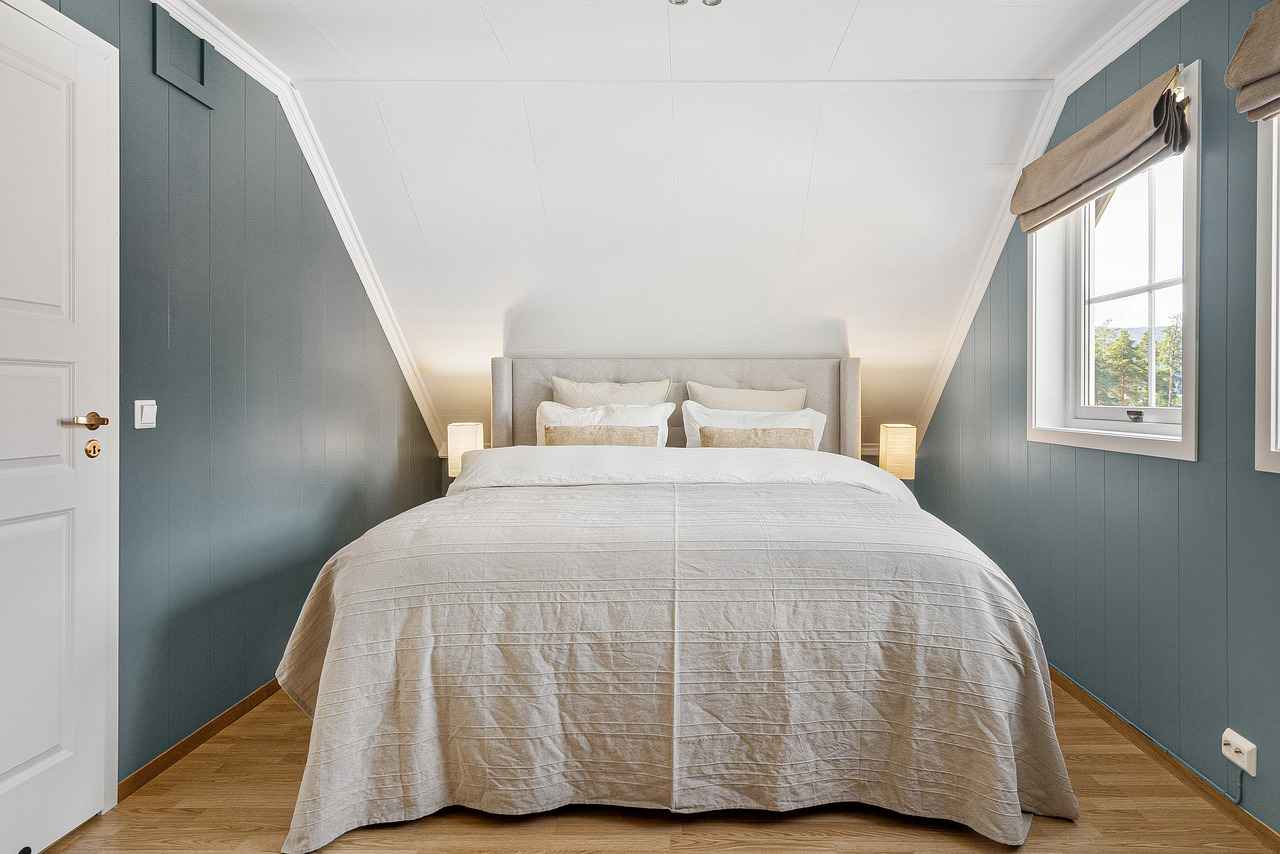
Tips for Styling a Low Floor Bed
Styling a low floor bed can significantly enhance both its visual appeal and functionality. By carefully selecting accessories and design elements that align with a minimalist theme, you can create a harmonious bedroom ambiance that promotes relaxation and tranquility.
When styling your low floor bed, the choice of bedding is crucial. Opt for simple, neutral colors to maintain a clean and cohesive look. Consider layering different textures, such as a soft duvet with cotton sheets and a knit throw, to add depth without overwhelming the design. This approach not only enhances the aesthetic but also invites comfort.
To further enhance the serene environment, incorporate minimalist accessories. Use small bedside tables that do not overpower the bed’s design. A sleek lamp with a soft glow can provide adequate lighting while keeping the space uncluttered. Additionally, consider placing a small indoor plant, such as a succulent or snake plant, on the bedside table to introduce a touch of nature without adding visual clutter.
Integrating natural elements into your bedroom can elevate the overall design. Choose materials like wood or bamboo for furniture and decor, as they harmonize beautifully with low floor beds. A wooden bench at the foot of the bed can serve both functional and aesthetic purposes, providing a place to sit while enhancing the natural vibe of the room.
Color selection plays a pivotal role in creating a minimalist space. Stick to a neutral palette with occasional pops of color through accessories like cushions or artwork. Soft whites, grays, and beiges can create a calming backdrop, while muted pastels or earthy tones can add interest without overwhelming the senses.
Your low floor bed should be the focal point of the room. To achieve this, consider using a statement wall behind the bed. This could be a simple painted wall in a darker shade or a textured wallpaper that complements the overall design. By drawing attention to the bed, you enhance its importance in the space while maintaining a minimalist aesthetic.
One of the key principles of minimalism is to keep surfaces clear. Ensure that your nightstands and other surfaces remain clutter-free. Limit the number of items displayed to only those that are essential or meaningful. This not only enhances the visual appeal but also promotes a sense of calm and organization in the bedroom.
When styling a low floor bed, consider furniture that serves multiple purposes. For example, choose a storage ottoman that can be used as both a seat and a storage solution for extra blankets or books. This approach maximizes functionality while adhering to minimalist principles.
In conclusion, styling a low floor bed involves thoughtful selection of bedding, accessories, and furniture that align with a minimalist aesthetic. By focusing on simplicity, functionality, and natural elements, you can create a bedroom environment that is both visually appealing and conducive to relaxation.
Choosing the Right Bedding
When it comes to designing a serene and minimalist bedroom, plays a crucial role. The bedding you select not only impacts the room’s aesthetic but also contributes to your overall comfort and relaxation. In this section, we will explore various aspects of selecting bedding that complements a low floor bed while maintaining a clean and uncluttered look.
To achieve a harmonious atmosphere, opt for simple, neutral bedding. This choice helps to create a calm visual environment, allowing other design elements in the room to shine. Neutral colors such as whites, beiges, and soft grays can enhance the feeling of spaciousness, which is particularly important in minimalist designs.
Layering textures is another effective way to add depth to your bedding without overwhelming the minimalist aesthetic. For example, consider using a combination of a smooth cotton sheet set, a cozy knit throw, and a lightweight duvet. This approach not only adds visual interest but also invites comfort, making your bed a cozy retreat.
- Natural Fabrics: Choose bedding made from natural materials like cotton, linen, or bamboo. These fabrics are breathable and contribute to a healthier sleeping environment.
- Subtle Patterns: If you wish to incorporate patterns, opt for subtle designs such as thin stripes or gentle geometric shapes. These can add a touch of personality without disrupting the overall minimalist vibe.
- Mixing Textures: Consider mixing different textures, such as a soft quilt paired with a smooth duvet cover. This layering not only enhances comfort but also creates a visually appealing display.
In addition to color and texture, the size of the bedding is also essential. Ensure that your bedding fits your low floor bed perfectly, as oversized or undersized bedding can disrupt the clean lines of the design. A well-fitted duvet or comforter will drape beautifully, enhancing the overall look of your bedroom.
Don’t forget about the importance of accessories. While keeping accessories to a minimum is key in a minimalist space, adding a few carefully chosen items can enhance your bedding’s appeal. A simple decorative pillow or a soft throw blanket can provide warmth and comfort without cluttering the space.
Ultimately, the goal is to create a bedroom that feels inviting and tranquil. By opting for simple, neutral bedding and layering textures thoughtfully, you can maintain the minimalist aesthetic that low floor beds embody while ensuring your space remains functional and stylish.
Incorporating Minimalist Accessories
In the realm of minimalist design, the accessories you choose can significantly impact the overall aesthetic and functionality of your space. When styling a low floor bed, it’s essential to strike a balance between enhancing the room’s beauty and maintaining a clutter-free environment. Here are some effective strategies for incorporating minimalist accessories that complement your low floor bed while promoting a serene atmosphere.
Opt for small bedside tables that do not overwhelm your space. These tables should be functional yet unobtrusive, allowing for easy access to essentials like books, glasses, or a glass of water. Consider materials that align with your bed’s design, such as light wood or metal, to create a cohesive look. A floating shelf can also serve as a modern alternative, providing a surface for decorative items without taking up floor space.
Choosing the right lighting is crucial in achieving a calming environment. Minimalist lamps with clean lines and soft lighting can enhance the ambiance without being overly decorative. Consider using table lamps with a simple design or wall-mounted fixtures that free up space on your bedside table. The goal is to create a warm glow that invites relaxation while maintaining a sophisticated look.
Bringing nature indoors can significantly enhance your bedroom’s tranquility. Select small indoor plants that require minimal maintenance, such as succulents or peace lilies. These plants add a touch of life and color to your space without overwhelming it. Position them on your bedside table or a nearby shelf to create a refreshing focal point that complements the low floor bed’s design.
While minimalism emphasizes simplicity, incorporating a few artistic elements can elevate the room’s character. Consider a single piece of wall art or a framed photograph that resonates with your personal style. This approach allows you to express individuality while keeping the overall design uncluttered. Choose frames that are sleek and subtle, avoiding overly ornate designs that can detract from the minimalist theme.
To add depth without clutter, focus on textural elements in your bedding and accessories. Layering different materials, such as linen, cotton, and wool, can create a cozy atmosphere that invites relaxation. Choose neutral tones to maintain a calm palette, and consider incorporating a soft throw or decorative cushions that enhance comfort while adhering to minimalist principles.
In a minimalist bedroom, every item should serve a purpose. Opt for functional decor that combines beauty with utility. For example, a stylish clock can serve as a practical accessory while also enhancing the room’s aesthetic. Similarly, consider multi-functional furniture, such as an ottoman that doubles as storage, to keep your space organized and visually appealing.
By thoughtfully selecting and incorporating these minimalist accessories, you can enhance the beauty of your low floor bed while creating a serene and inviting environment. Remember, the key lies in maintaining a balance between functionality and aesthetics, ensuring that each piece contributes to the overall harmony of your bedroom.
Frequently Asked Questions
- What are the main benefits of low floor beds?
Low floor beds offer enhanced accessibility, making it easier for everyone, especially children and the elderly, to get in and out of bed. They also save space in smaller rooms, creating a more open atmosphere, and provide a unique aesthetic that complements minimalist designs.
- How do I choose the right material for my low floor bed?
When selecting a material, consider your personal style and the overall décor of your room. Wooden beds add warmth and natural beauty, while metal frames provide a sleek, industrial look. Upholstered options can offer comfort and softness, so think about what suits your needs best!
- Can low floor beds fit into different design styles?
Absolutely! Low floor beds are versatile and can seamlessly integrate into various design styles, such as Scandinavian minimalism or Japanese Zen aesthetics. Each style brings its unique charm, allowing you to create a serene and stylish bedroom environment.
- What should I consider when styling my low floor bed?
When styling your low floor bed, opt for simple, neutral bedding to maintain a clean look. Layering textures can add depth without overwhelming the space. Incorporate minimal accessories like small bedside tables or plants to enhance the room’s aesthetic while keeping it clutter-free.


